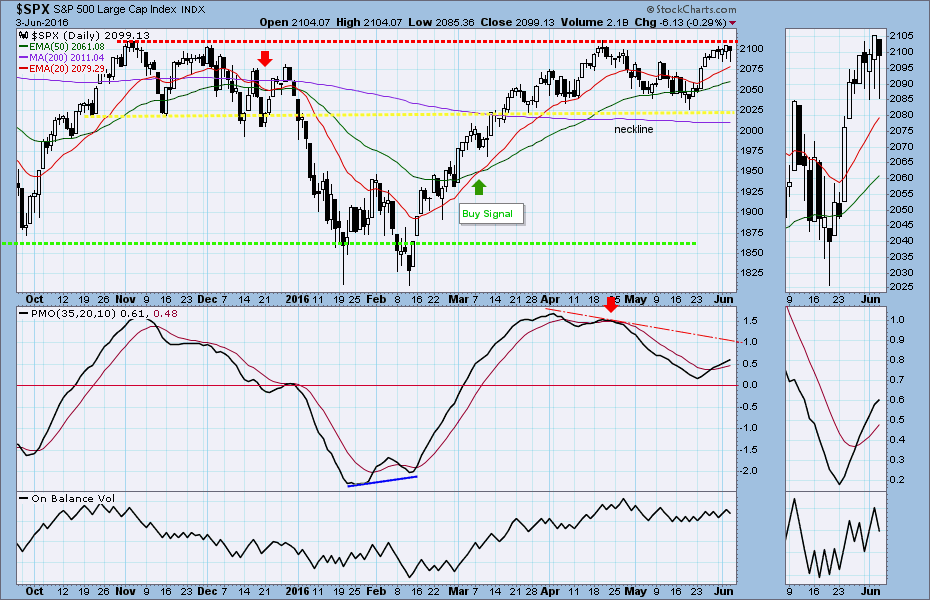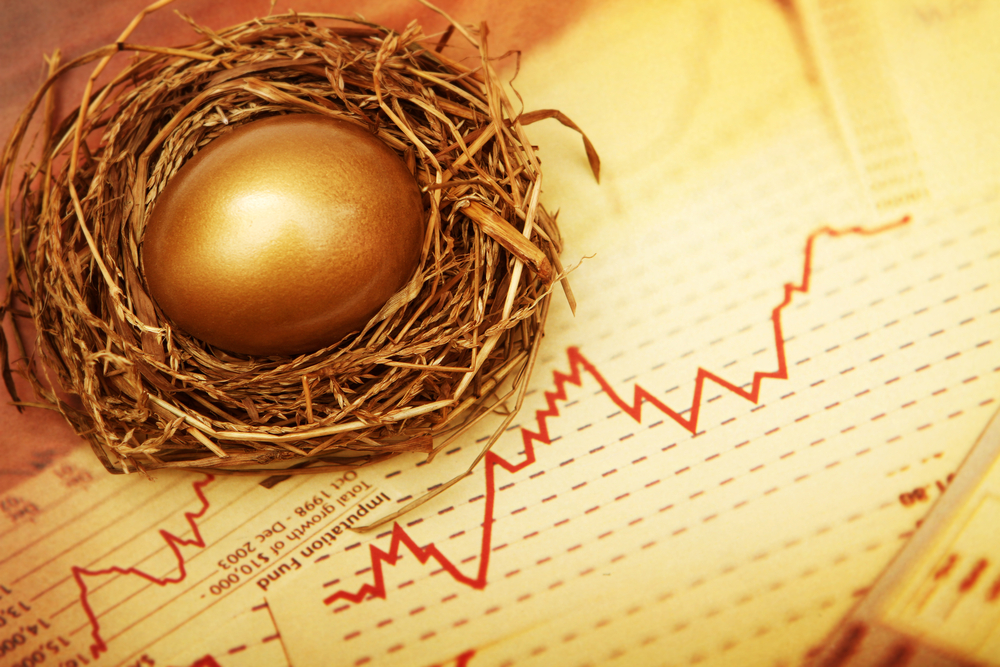We haven’t been in this space for a month, travelling in North America and Asia. And you know what? We didn’t miss much.
If fact, if we were long-term buy-and-hold-forever investors, we could have stayed away for most of the last two years and missed nothing except a couple of stomach-churning declines followed by almost equally rapid recoveries.
But in terms of market growth it would have made no difference: there has been virtually no progress for the past 17 months.
Since February of 2015 the S&P500, the index of US large-cap equities, has broken above the 2100 level 12 times… but closed the month above that level on only three occasions, the last being July of 2015.
The month of May fit right in with that pattern: it hit 2103 and change, but closed the month at 2097.
So there it is. The long bull market that began in March 2009 has hit a ceiling… and stayed below if every time it tried to move up. It hasn’t been able to advance; and it hasn’t been able to extend initial declines that looked like the final resolution.
So what happens next?
For the long-term investing crowd, the answer is: “Wait and see.” The large-cap index is in the same position it has been in many times before: balanced at a point where it must go forward or it must go back, and with the odds about equal between the two directions.
There will likely be several false break-outs and break-downs in the next few weeks. When the decisive move finally occurs – and can be identified – it will probably happen fast, and will probably move further than anyone thinks.
But until then this is no time to be making big long-term commitments of new money. It is a time to wait and see.
Last week
Last week, following the Memorial Day holiday the markets were essentially still on vacation … until the release of the Non-Farm Payrolls report in the Friday premarket. The NFP was awful, horrible, very bad; the worst report since 2010.
The market crashed (although gold spiked) but recouped they losses during the day, because traders assumed it would foreclose any possibility of a Fed rate hike at the June 14 Fed Open Market Committee meeting, and make it hard to even consider a rate increase in July. There was even some speculation that it might lead to some new and improved version of quantitative easing.
Fuggedaboutit. To some extent the Fed is trapped, stuck with a near-zero interest rate policy which it knows cannot continue, but which it dare not try to correct. Faced with that dilemma, in the past it has equivocated: talked tough about an imminent rate hike, but found reasons to not do it.
We think they will almost certainly do the same thing in June, and probably at the July meeting as well. And then the summer is almost over, and we will be in the middle of what will probably be the nastiest and loudest political campaign in recent memory.
There may be bureaucrats who are willing to upset the applecart in the middle of that uproar; we just don’t think any of them are directing the affairs of the Federal Reserve. Start thinking the December 13 meeting before there is any substantive action – despite all the jawboning that will go on before then.
This week
The S&P 500 cash index ($SPX) closed at 2099.13 last Friday, up 7 cents for a tiny weekly gain. It formed a doji for the week, a sign of indecision.
The indecision will probably be resolved by the Fed, and the Fed has been strangely silent for some time, with relatively few public statements from anyone but the Chair. It feels like they are trying to enforce a little message discipline.
Before the Non-Farm Payroll debacle Friday Janet Yellen had made some decidedly hawkish (i.e. pro rate hike) statements. She is scheduled to speak again Monday at noon, the only scheduled appearance before the FOMC meeting June 14-15. There is also an important appearance from the president of the European Central Bank on Thursday.
So the week will likely be devoted to searching for hints about the Fed’s current interest rate policy, if any, with the usual rumor-based dashes in one direction or the other. There may be a fake break-out this week if there is any hint from Yellen that rates will not be increased and/or that QE may resume.
Prognosis: sideways, with whipsaws as the rumors circulate. The market will likely attempt to break above 2100 and may push as high as 2110. But the short-term is over-bought, even though the long-term chart remains bullish. It may be time for a little pullback to the support around 2040.
This is a week to be cautious. Aren’t they all.
Today
Fortunately for us we’re not part of the buy-and-hold crowd. We make our money trading the short-term zigs and zags in the market, and there is never any shortage of those. Today will be no exception.
We use the S&P500 mini-futures (ES) as our short-term trading vehicle. In the four-day week just concluded, the ES went sideways in the 2080 to 2105 range. Most of the trading activity was between 2085 and 2100, a relatively narrow range.
A break above 2108 could push the price above 2112.50, or higher up to 2121.50-19.50 if the upside momentum is strong. A failure to break above 2108, but instead a break below the 2090 level, could easily lead the ES back to last Friday’s low or lower toward the 2075-70 zone.
In the past 18 months, none of the ES “break-throughs” above 2100 held up for more than three days. Fed action will be the key to determining if the ES will advance or decline this time.
Major support levels: 2065-68.50, 2055-56.50, 2023-20, 2011.50-09
Major resistance levels: 2112.50-10.50, 2119.50-21.50, 2029.50-31.75, 2145-42.50
Visit Naturus.com to see Nat’s outlook for gold, oil and the ES in the week ahead. Free.
Chart: SPX Daily chart to June 3, 2016





